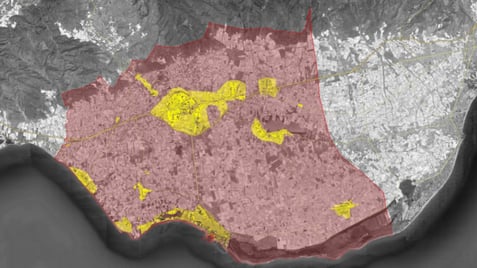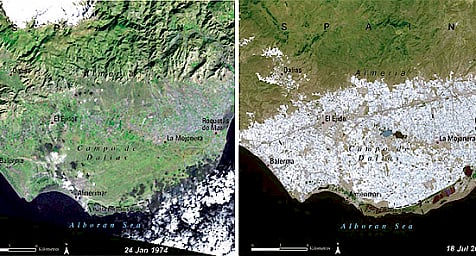



IR.05.CJ_2


Drawing on my seminar paper The Permanent Underclass in El Ejido, Almeria. The Relationship Between Agroindustry and Social Inequalities, I propose an ABM approach to re-interpret the institutional relations at play in the climate-dependent and climate-altering context of El Ejido.


In the context of El Ejido's agroindustry, climate injustice emerges where racialized migrant labor is made to endure extreme heat, ecological degradation, and institutional abandonment in order to sustain a climate-intensive agroindustrial system — a system they have no power over, no benefit from, and no protection within.
Therefore, I ask: How do heat exposure and water access policies affect the wellbeing of migrant workers living in informal settlements in El Ejido?






If you do not see the PDF,
please, refresh the page.


El Ejido from 1974 to 2024


Residential nuclei embedded in greenhouse areas


Agents:
Migrant worker
Greenhouse owner
Municipal Authority
Resident
Attributes:
Legal status, income, housing type, health, trust in institutions
Capital, compliance tendency, labor demand, owned land area
Political orientation, policy scope, enforcement level
Income, ideology, complaint frecuency
Key actors


Physical structure
Component:
Greenhouses
Informal Housing
Water supply
Properties:
Temperature, ownership
Exposure to heat, insulation
Allocation (industrial vs. human)


Constitutional Structure
Agents:
Rule
Norm
Shared Strategy
Role
Example:
"Only residents with documentation may access non precarious jobs."
"It is normal to avoid renting to migrants"
"Employers use undocumented labor because it's cheaper and inspections are either rare or the fine is worth it."
Municipal officer -> enforces policy


If the migrant worker does not have access or income to get into a new job, he (97% are men) would chose to stay and face heat risk and poor labor conditions. Otherwise, they would leave. Therefore, the decisions of the migrants depend on the whole structure of the city, the prejudices of the locals and the job opportunities.
